DROPS Kid-Silk
A wonderful mix of super kid mohair and silk
from:
3.90£
4.14€
Content: 75% Mohair, 25% Silk
Yarn Group:
A (23 - 26 stitches)
/ 2 ply / lace
Weight/length: 25 g = approx 210 m
Recommended needle size: 3,5 mm
Knitting tension: 10 x 10 cm = 23 sts x 30 rows
Care: Hand Wash, max 30°C / Dry Flat
Made in: EU
Raw material origin: Mohair from South Africa, silk from China
This yarn has an Oeko-Tex® certification (certificate number 24CX00064), Standard 100, Class II from the CENTRO TESSILE COTONIERO E. This means that is has been tested for harmful substances and is considered safe in human-ecological terms. Class II means the yarn is suitable to come in direct contact with the skin to a large extent, such as blouses, shirts, mattresses, etc.
A luxurious, light brushed yarn in an exclusive mix of 75% mohair super kid and 25% mulberry silk, DROPS Kid-Silk is feather light, and will give garments a sophisticated look, whether used alone or held together with other yarns.
Perfect for smaller garments such as shawls, shoulder warmers and feminine tops, DROPS Kid-Silk is available in a wide colour palette, and it’s our most popular yarn for yarn combinations!
Read more about our products' sustainability here
Please be aware that the colours shown may vary from screen to screen in the same way that shades may vary slightly from dye lot to dye lot.
First of all, consider just airing the garment, instead of washing it. If you still desire to wash it, here are some guidelines:
- Hand wash at 30ºC - separately - with wool detergent without enzymes or optical brighteners.
- Don’t let the garment soak. Move the garment gently back and forth, do not rub or squeeze it.
- Rinse the garment until the rinse water is completely clear, making sure the water temperature stays uniform.
- Do a light centrifugation of the garment (about 800rpm), choosing a program that DOES NOT take in water at the start. Or press carefully the water out of the garment with a dry towel. The garment shouldn’t be twisted or rolled.
- To dry the garment, shape it and lay it flat - do not hang - ideally on a warm bathroom floor or on top of a drying rack in a room with good air circulation. Never dry the garment in direct sunlight.
- Don’t tumble dry.
Note: If you are washing a project made with this yarn combined with another, the general guideline is to follow the washing instructions for the most delicate of the yarns you are working with.
Do you have a question about this yarn?
See a list of frequently asked questions (FAQ) about our yarns.
1) What type of fibers make the DROPS yarns?
Yarn can be made from a large number of natural and synthetic fibers. DROPS carries mainly yarns made from wool, cotton, alpaca, linen, mohair and silk. Each fiber type has its own qualities, and they are often mixed to take advantage of the best properties of each one. Coarse yarn has the advantage of being stronger and more durable, and finer fibers offer more softness and comfort. Here a bit about the main fibers we carry:
Alpaca:
Alpaca fleece is the natural fiber harvested from an alpaca, and it is similar in structure to sheep wool fiber. Its softness comes from the small diameter of the fiber, similar to merino wool. It is a soft, durable, luxurious and silky natural fiber. Yarn made from alpaca fibers does not felt or pill easily, and it can be light or heavy in weight, depending on how it is spun. While similar to sheep’s wool, it is warmer, not prickly, and has no lanolin, which makes it hypoallergenic. Alpacas come in 22 natural colors, with more than 300 shades from a true-blue black through browns-black, browns, white, silver and rose-greys.
Mohair:
This fiber comes from the Angora goats, and it's considered a luxury fiber. Mohair yarn is warm as wool, but much lighter in weight; it is durable, dyes well and does not felt easily. Mohair fibers have also a distinctive luster created by the way they reflect light. Despite being a hard fiber, mohair is usually spun into a very fluffy yarn, resulting in airy and lustrous garments.
Wool:
The wool fibers come from the skin of sheep and are relatively coarse fibers. Two striking characteristics of wool are its susceptibility to heat and its felting property, which is caused by the scales on the surface. Depending upon the breed of sheep, the appearance of the wool varies.
Wool from Merino sheep is considered the finest type of wool, having as characteristics that is finely crimped and soft. All the Merino wool in the DROPS yarns has its origins in South America, coming from sheep that have not been subject to Mulesing.
Pure new wool is wool made directly from animal fleece, and not recycled from existing wool garments.
Machine washable wool is wool treated chemically to minimize the outer fuzzy layer of the fibers, and be therefore fitable for machine wash (see Superwash).
Silk:
The silk fiber is a fine continuous fiber produced from the cocoon of a moth caterpillar known as the silkworm. While silkworm is cultivated, the wild or tussah silk is obtained from uncultivated silkworm cocoons. Silk fiber is one of the strongest natural fibers and makes a wonderful knitting yarn. It blends really well with other fibers, especially wool. Silk also dyes beautifully with natural dyes.
Vegetable fibers:
There are several varieties of vegetable fibers, found in the cell walls of plants or vegetables. Of all the varieties, two are recognized as major knitted or textile fibers. They are cotton and linen.
Cotton is the fiber surrounding the seeds in a cotton pod, and it is almost pure cellulose. Cotton is usually white in color but there are green and brown varieties as well. The cotton fiber is most often spun into yarn or thread and used to make a soft, breathable textile that is good for summer clothing and accessories, making a weaker yarn than silk or linen but stronger than wool.
Mercerized cotton is cotton that has been through a mercerization treatment. This treatment gives cotton fabrics and threads a lustrous yarn that is more lustrous than conventional cotton. It is also stronger, takes dye a little more readily, makes the yarn more resistant to mildew and reduces lint. It also may not shrink or lose its shape as much as "regular" cotton.
Linen is a fiber derived from the stalk of the flax plant that is durable and stronger than any other fiber. The linen fiber is relatively soft, straight and lustrous and becomes more beautiful with age. Linen is more comfortable to wear in hot temperatures than cotton, due to the fact that it absorbs moisture better and dries more quickly.
Other materials used in our yarns include synthetic fibers such as acrylic, viscose, polyamide (nylon) and polyester. These fibers are used mostly to give strength to a yarn (like our sock yarn, DROPS Fabel) or a special kind of structure (like our blown yarn, DROPS Air).
The polyamide fibre, commonly known as nylon, is very strong, durable, lightweight, easy to care for (can be machine washed and dried), and elastic, which makes it perfect for blending with other fibres to produce hard-wearing yarns like sock yarn.
Compared to polyester, polyamide is softer and more flexible, but it also absorbs more water and dries slower.
3) What type of information can I find on the DROPS yarn labels?
All DROPS yarn labels include information about fiber content (wool, cotton, etc.), weight in grams and ounces, length in meters and yards, washing instructions and symbols (explained here), color number, dye lot number and yarn group information.
4) What are the DROPS yarn groups?
All DROPS yarns are classified into 6 different thickness groups (A to F). Yarns in a same group have similar knitting tension/gauge, and can therefore be interchanged in patterns; however the length may be different, so when substituting always calculate the amount of meters/yards needed for the pattern to know the amount of yarn you need to get.
5) Can I use a different yarn than the one mentioned in the pattern?
Yes, as long as the yarn can be worked in the same knitting tension/gauge. Always swatch to make sure you get the same number of stitches in width and rows in height as given in the pattern.
Remember that different yarns with different textures, will give the garment different looks. The yardage/length may also be different, so when substituting always calculate the number of yards needed, in order to know the amount of yarn you need.
Read more about how to calculate the amount of an alternative yarn - and how to replace 1 thread of a yarn with 2 or more of another, here.
6) What does it mean when a yarn is “Superwash”?
A superwash wool is a special wool product that has been treated or processed in a way that allows it to be machine washable. Many people are afraid to work with wool because it is so easy to shrink (though some shrink wool on purpose) and superwash wool can allow them to work with great fibers without worry. (Read more here).
7) What does “Oeko-Tex® certified” means?
The Oeko-Tex® Standard 100 was introduced at the beginning of the 1990s as a response to the needs of the general public for textiles which posed no risk to health. The Oeko-Tex® Standard 100 is a globally uniform testing and certification system for textile raw materials, intermediate and end products at all stages of production. The test for harmful substances comprise substances which are prohibited or regulated by law, chemicals which are known to be harmful to health, and parameters which are included as a precautionary measure to safeguard health.
For more info go to www.oeko-tex.com
10) How accurate are the colours on the shade cards online?
When obtaining images for the shade card, we do our best to achieve the highest level of color accuracy. Unfortunately, we cannot guarantee how images will appear on your computer screen. Every monitor displays color differently, some colors might look darker than they really are, and some colors might be more saturated on some screens. If you experience that many of the yarn colors looks different on your screen than the actual color of the skeins, you can adjust the setting on your monitor.
11) What is a micron? What does super fine / extra fine mean?
The fineness of yarn fibers is measured in microns (thousands of millimeters). Super fine alpaca wool is 26-28 microns. Fine merino wool is less than 21.5 microns and extra fine merino is under 19.5 microns. The less microns the softer and more delicate a quality can be, the more microns the more hard wear the quality will be.
The reason why the microns in a yarn’s fibers are important is that the yarn will eventually become something else, and how delicate or coarse a yarn is will determine in part what we use it for. That’s why we recommend the softest yarns (like DROPS Baby Merino) for baby clothing, or why we choose to use a more hard wear yarn like DROPS Snow, for a seating pad or slipper.
12) Why are the colours in my skeins of print yarn different?
The reason why two skeins of a same print yarn look different can be 1) that both skeins are part of different dye lots; 2) that the skeins have been dyed using a technique called "magic print" (the one used for example in DROPS Delight), which provides unique patterns and smooth colour transitions to each skein, meaning also that within one dye lot, lighter or darker varieties might appear. This is no fault or defect, but part of the yarn's character.
13) My store doesn’t have the colour I want, what can I do?
If your DROPS store doesn’t have the yarn colour you want, try contacting a DROPS Super Store (the ones with the golden badges) - they will make sure to get a hold of the colour even if they don’t have it in stock themselves. See a list of all DROPS stores here.
14) Where can I find a specific dye lot of a colour?
Always try contacting your DROPS store first. If they do not have the dye lot you want we recommend you to ask other knitters and crocheters in the DROPS Workshop in Facebook or Ravelry, which may have the dye lot in their stash and might be willing to part from it.
Yarn sheds because there's not enough twist to hold all of the fibers together. All yarns have excess fibers (from production) that might come off as lint or shedding, in varied degrees that depend on how the yarn is spun. Brushed yarns ("hairier" yarns) like DROPS Melody, have more of these loose fibers than other yarns, and therefore shed more. Shedding also depends on what is worn under or over the garment, and whether this pulls at the yarn fibers. It’s therefore not possible to guarantee that there will be no shedding.
Below are some tips on how to get the best result when working with hairier yarns:
- When the garment is finished (before you wash it) shake it vigorously so the looser hairs come off. NOTE: do NOT use a lint roller, brush or any method that pulls at the yarn.
- Place the garment in a plastic bag and put it in your freezer - the temperature will cause the fibers to become less attached to each other, and excess fibers will come off easier. Leave in the freezer for a few hours before taking it out and shaking it again.
- Wash the garment according to the instructions on the yarn label. Garments worked with hairier yarns usually need to be shaken once dry after washing, so that the hairs rise and any excess fibers can come off.
Pilling is a natural process that happens to even the most exclusive of fibers. It's a natural sign of wear and tear that is hard to avoid, and that is most visible in high friction areas of your garment like a sweater's arms and cuffs.
You can make your garment look as new by removing the pilling, using a fabric comb or a pill/lint remover.
How can I replace this yarn?
If you are looking to replace this yarn with another DROPS yarn, you can use another yarn within the same yarn group, or try our yarn converter!
Comments / Questions (535)
![]() Lena Morén wrote:
Lena Morén wrote:
Jag tänkte blanda Kid Silk och Saffran (kobolt blått) i en barntröja. Min erfarenhet är att mohair kan vara stickigt. Nu undrar jag: Tror ni blandningen kommer att funka? Kommer plagget att stickas (klia)? (Barnet i fråga tycker inte om tröjor som sticks och är känslig för det.)
28.10.2024 - 05:17DROPS Design answered:
Hei Lena. DROPS Kid-Silk er et mykt og lett garn, om det klør / stikker er ganske personlig. Er man sensetiv vil man kanskje reagere, men man må test det selv. Man legger ned mye arbeid i å strikke et plagg, så da er det kanskje best å la barnet kjenne på et nøste mot halsen for å se hva man syns, før man evnt begynner å strikke. mvh DROPS Design
28.10.2024 kl. 08:08
![]() Janna wrote:
Janna wrote:
Ich habe eine Jacke aus Kid-Silk und Flora gestrickt, und bin total frustriert. Das Garn hat derartig geflust!!!! Jeden Tag saugen, mich völlig abdecken, und trotzden kribbelt es überall! Für eine weitere Jacke hab ich mir noch mehr von diesem Garn bestellt, un möchte es am liebsten zurückgeben. Gibt es einen Trick, damit es beim stricken nicht so stark fusselt?
16.10.2024 - 11:52DROPS Design answered:
Liebe Jana, hierkönnen Sie mehr darüber lesen, Ihr DROPS Händler hat vielleicht mehr Tipps für Sie. Viel Spaß beim Stricken!
16.10.2024 kl. 16:28
![]() Yvette wrote:
Yvette wrote:
Is Drops Kid-Silk zacht voor de huid. Van gewone wol krijg ik jeuk. Groet, Yvette
15.10.2024 - 19:24
![]() Christiane Verbeeren wrote:
Christiane Verbeeren wrote:
Is er ook (tegen betaling) een stalenboek verkrijgbaar?
17.09.2024 - 15:40
![]() Nataliia wrote:
Nataliia wrote:
Chcę zamówić ciemnożelony 19 kolor 5 sztuk
16.09.2024 - 19:50DROPS Design answered:
Natalio, możesz zamówić włóczkę przez stronę jednego z naszych dystrybutorów, znajdziesz ich wszystkich TUTAJ. Pozdrawiamy!
17.09.2024 kl. 13:52
![]() PATOUT wrote:
PATOUT wrote:
Bonjour, Pouvez-vous me confirmer le nombre de mètres par pelote de la qualité Kid-Silk ? Sur votre site, à la page "groupe de qualités" il est indiqué 420m mais sur le site de la boutique Kalidou il est indiqué 200m. Du simple au double. Merci pour votre aide. Bonne fin de journée ! Sylvie
13.08.2024 - 16:46DROPS Design answered:
Bonjour Mme Patout, 1 pelote Kid-Silk pèse 25 g et fait environ 210 m, soit 420 m pour 50 g, tout va dépendre de l'unité retenue pour le poids. Bon tricot!
14.08.2024 kl. 08:29
![]() Rosa Garcia Gómez wrote:
Rosa Garcia Gómez wrote:
Suelta fibras ? gracias
12.08.2024 - 18:37DROPS Design answered:
Hola Rosa, sí, las lanas mohair tienden a perder un poco de pelo, y Kid-Silk es mohair, pero es algo normal. No pierde mucho.
18.08.2024 kl. 19:55
![]() Dominika wrote:
Dominika wrote:
Dzień dobry, chciałabym połączyć tą włóczkę z włóczką Drops Flora. Jaki kolor Flora odpowiadałby kolorowi „uni colour 54” i „uni colour 21” Kid-Silk?
07.08.2024 - 19:51DROPS Design answered:
Witaj Dominiko, Kid Silk kolor 54 pasuje np. do Flory nr 31 czy 07. Co do Kid-Silka kolor 21 - proponuję Florę nr 10. Pozdrawiam!
08.08.2024 kl. 09:48
![]() Katarzyna wrote:
Katarzyna wrote:
Witam, Co dokładnie oznacza skład 75% moheru i 25% jedwabiu w Kid-Silk? Czy jedwab, to nitka, na którą naprzędzony jest moher, czy znajduję się on również w moherowym "meszku"? Pozdrawiam
24.07.2024 - 22:08DROPS Design answered:
Witaj Kasiu, na jedwabną nitkę jest naprzędzony moher. Pozdrawiamy!
25.07.2024 kl. 21:59
![]() Jane wrote:
Jane wrote:
Vilken färg av kid-silk passar bäst att blanda med Drops sky nr 03?
03.07.2024 - 21:07DROPS Design answered:
Hei Jane. Det kommer an på hva du selv liker, om du vil ha en farge som går toni-i-tone eller med litt melering/fargenyanser. F.eks Kid-Silk farge 56 marsipan vil gi en lysere mix med Sky enn Kid-Silk farge 20, lys beige, mens Kid-Silk farge 54, lys sand og Kid-Silk farge 12, beige vil gi en mørkere mix og mer melering / farge nyanser. mvh DROPS Design
08.07.2024 kl. 07:18
![]() Anna wrote:
Anna wrote:
Hello! is any of Kid-silk undyed in natural shade?
12.06.2024 - 22:06DROPS Design answered:
Dear Anna, all colours DROPS Kid-Silk are dyed. Happy knitting!
13.06.2024 kl. 13:20
![]() Karen A wrote:
Karen A wrote:
Hello, I would like to ask whether this kid silk yarn is produced in a cruelty free manner. Thank you in advance.
11.04.2024 - 22:12
![]() Amy wrote:
Amy wrote:
Is color 36 of Drops Kid Silk discontinued? I don't see it in the above chart.
18.02.2024 - 21:45DROPS Design answered:
Dear Amy, in this page you can see all colours of this yarn that are currently in production. If a colour is no longer in this list then it means it is no longer produced but you can still contact our DROPS stores to see if they have any leftover stock of this colour in their stores. Happy knitting!
18.02.2024 kl. 23:40
![]() Sandra wrote:
Sandra wrote:
Liebes Drops-Team, ist die Wolle gegeben Mottenbefall ausgerüstet?
11.01.2024 - 11:26DROPS Design answered:
Liebe Sandra, nein, die Wolle ist nicht gegeben Mottenbefall ausgerüstet. Viel Spaß beim stricken!
12.01.2024 kl. 08:24
![]() Marine wrote:
Marine wrote:
Bonjour, J’ai commandé de la kid Silk et réalisé un pull avec en pensant que cette laine était douce mais je me rend compte qu’elle pique est-ce normal ? Merci pour votre réponse, belle année!
01.01.2024 - 19:20DROPS Design answered:
Bonjour Marine, la sensibilité varie d'une personne à l'autre, contactez votre magasin, on pourra vous aider, même par mail ou téléphone. Bon tricot!
02.01.2024 kl. 12:37
![]() Xoxo wrote:
Xoxo wrote:
Bonjour le bleu cobalt est il un bleu electrique ? , quelle quantité pour taille 40, est ce mieux tricoté en 2 fils ? si oui quel quantité en 2 fils et quel numero aiguille ? merci
14.12.2023 - 16:17DROPS Design answered:
Bonjour Xoxo, pour toute assistance au choix d'une couleur, n'hésitez pas à prendre contact avec votre magasin, ce sera bien plus simple pour eux de vous aider, même par mail ou téléphone. Retrouvez ici tous nos modèles tricotés avec 2 fils Kid-Silk ou bien 1 fil Kid-Silk + 1 autre fil du groupe A, En fonction de la forme, de la tension, du point utilisé, etc... la quantité peut varier, mais l'un de ces modèles pourra probablement vous inspirer. Bon tricot!
14.12.2023 kl. 16:30
![]() Doris wrote:
Doris wrote:
Liebes Drops-Team, passt die Kid-Silk marineblau zur Lima, Karisma oder Nepal marine? Sie ist nicht als übereinstimmende Farbe angegeben, LG Doris
03.12.2023 - 12:48DROPS Design answered:
Liebe Doris, wenn Sie Hilfe mit den Farben brauchen wenden Sie sich bitte gerne an Ihrem DROPS Händler, dort wir man Ihnen gerne - auch per Telefon oder per E-Mail - weiterhelfen. Viel Spaß beim stricken!
04.12.2023 kl. 16:19
![]() Noomi Altgärde wrote:
Noomi Altgärde wrote:
Hej! Vilke färg från Baby Merino är mest lik Kid silk puder? Och vilket baby merino är mest lik Kid silk pärlrosa? Tack!
28.11.2023 - 15:04DROPS Design answered:
Hej Noomi, tror den som passar bäst till Kid-Silk 41 puder är Baby Merino 49 ökenros. Och till Kid-Silk 40 pärlrosa passar BabyMerino 23 ljus beige :)
30.11.2023 kl. 11:01
![]() Noomi Altgärde wrote:
Noomi Altgärde wrote:
Hej! Vilke färg från Baby Merino är mest lik Kid silk puder? Och vilket baby merino är mest lik Kid silk pärlrosa? Tack!
27.11.2023 - 13:10
![]() Joanna Earl wrote:
Joanna Earl wrote:
Hello Can you offer some advice re using DROPS Kid-Silk? I have found a colour I love , Please can you tell me if it is suitable to use multiple strands of this to create a thicker yarn for a fluffy sleeveless tank, in order match the chunky wool in the pattern. ? I’m fairly new to knitting but love your alpaca yarns . I’ve been doubling up the drops melody for another jumper and it worked well but I hoping to use 4 strands of the kid silk . Many thanks Jo
11.10.2023 - 13:09
![]() Conny wrote:
Conny wrote:
Wie bitte heißen die Farbnummern der 3 rosa Töne der Kid-Silk auf der Abbildung auf der Webseite? Ich kann sie leider nicht zuordnen! Vielen lieben Dank!
28.09.2023 - 21:19DROPS Design answered:
Liebe Conny, es sind die Farben: 13-04-40. Viel Spaß beim stricken!
02.10.2023 kl. 12:10
![]() Gudrun wrote:
Gudrun wrote:
Die 4. Garnkombination gefällt mir ausgesprochen gut. Sind das die Farben Pistazieneis, hell Jeansblau und Lavendel? Bin mir beim Blau nicht ganz sicher - hell Jeansblau oder blauer Nebel ... Viele liebe Grüße! Gudrun
21.09.2023 - 10:47DROPS Design answered:
Liebe Gudrun, von unten nach oben haben Sie Farben Nr 11, lavendel, dann Farbe Nr 06, blauer nebel in der Mitte und ganz oben, auch richtig gesehen: Farbe Nr 47: pistazieneis. Viel Spaß beim stricken!
21.09.2023 kl. 17:03
![]() Diane wrote:
Diane wrote:
Hello, is there a shade card for this yarn? Would sure be extra handy for those of us who mix strands :-)
09.09.2023 - 18:17DROPS Design answered:
Dear Diane, no, we don't have shade cards for our yarns.
10.09.2023 kl. 18:39
![]() Doris wrote:
Doris wrote:
Passt die Kid-Silk Pink nicht zur Karisma 13 pink? Sie ist nicht als übereinstimmende Farbe angegeben. Ich würde sie gerne zusammen verstricken.
05.09.2023 - 12:06DROPS Design answered:
Liebe Doris, die Farben sind nicht genau dieselben da Karisma 13 etwas dunkler als Kid-Silk 13 ist, aber beide Farben können auch zusammenpassen - gerne kann Ihnen Ihr DROPS Händler damit helfen, die richtigen Farben zu finden (auch per Telefon oder per E-Mail). Viel Spaß beim stricken!
05.09.2023 kl. 15:44





















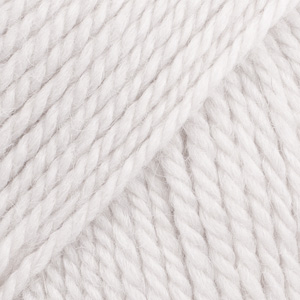





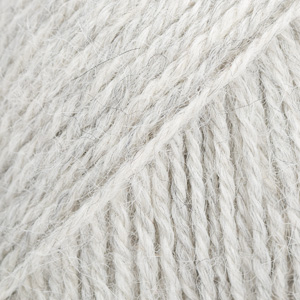







































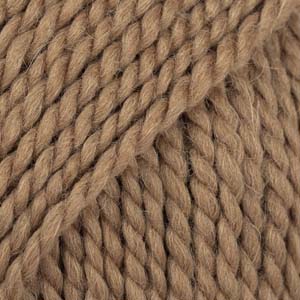



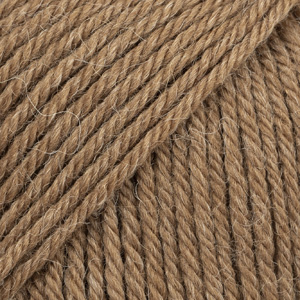




















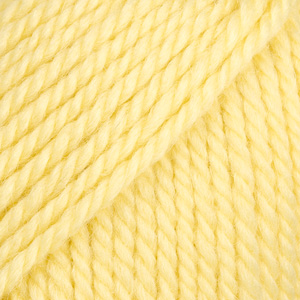












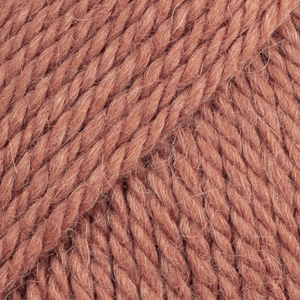


































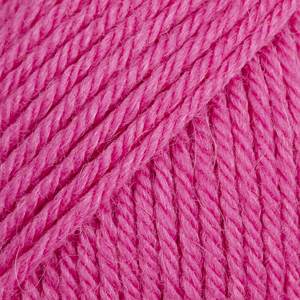










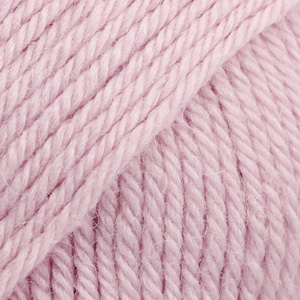
































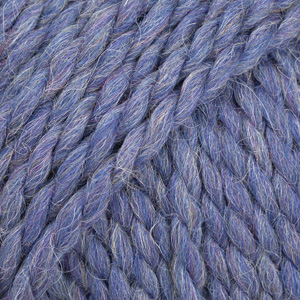



















































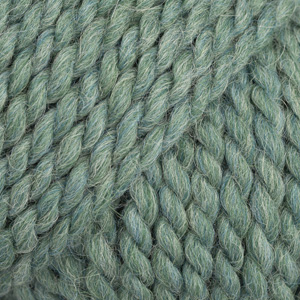


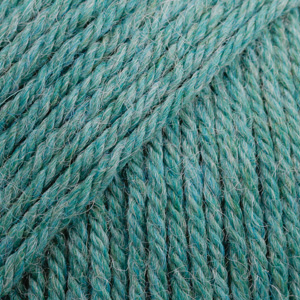



















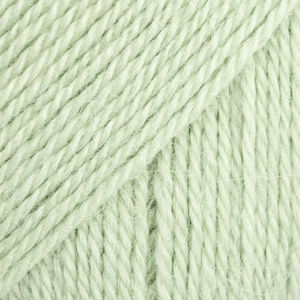






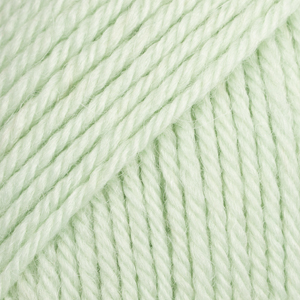














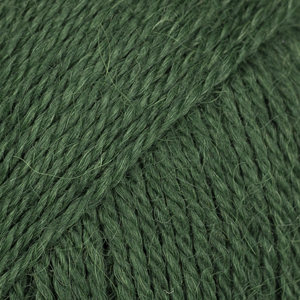


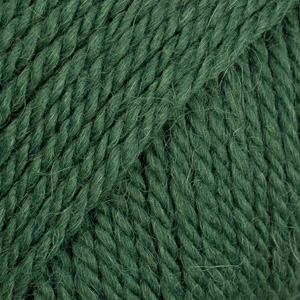


















































Hallo, ich bin von der Qualität bei den Farben Kobaltblau und moonlight etwas enttäuscht. Sie sind sehr kratzig. Marzipan dagegen ist wunderbar, wie es sein sollte.
29.09.2024 - 11:59